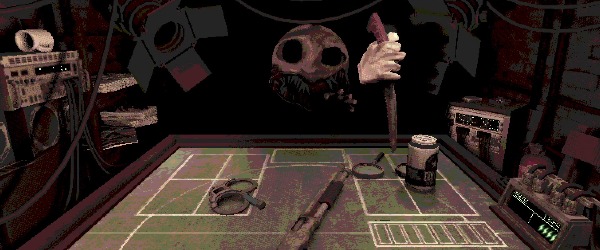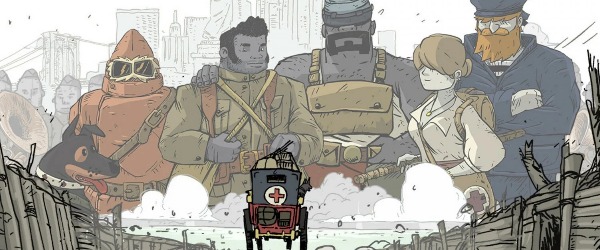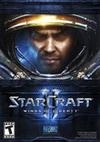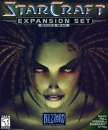
StarCraft II: Wings of Liberty - Review
by Craig S , posted on 02 August 2010 / 12,817 ViewsWatching Blizzard announce game after game for the WarCraft series in quick succession has been pretty tough for us StarCraft fans. But now – finally - over 12 years after the original, we get our sequel; a sequel to what many of us consider to be not just the best real time strategy (RTS) game made thus far, but the best game... period. Is it everything we ever hoped for from a sequel to StarCraft, or are Blizzard starting to lose their magical touch at the worst possible moment?
Wings of Liberty is the first of three StarCraft II titles; one for each of the three playable races. Blizzard have decided to kick things off with the Terran game, so the focus here is on the archetypal action hero from the first game, Jim Raynor, and his twin efforts to overthrow the ‘Dominion’ and at the same time protect Terran civilians from the Zerg swarm. Because this is ‘the Terran’ game, you’ll mostly be playing as the Terran in the single player campaign (although you also spend time playing as Protoss, and you do of course fight against all three races), but you’re free to play as any of the three races in all other sections of the game.
The story, which became quite convoluted in the original StarCraft, offers a much more rewarding and simplistic narrative in Wings of Liberty, albeit one littered with clichéd dialogue. The set-up is that Jim Raynor has a band of loyal soldiers eager to help him overthrow the Dominion, save civilians from the Zerg, and also make a bit of money on the side. But his forces are small and resources scarce, so he must first acquire funds to build up his army and research upgrades, before also gaining the allegiance of key characters in order to truly accomplish his objectives. As it turns out this is actually quite a handy tutorial device. You’re essentially stripped of all but the most basic units and must then complete missions to acquire new ones. For those who are unfamiliar with StarCraft, this should prove to be a great introduction to the units and their abilities. For those who are familiar with the series already, like myself, it’s a nostalgic trip down memory lane, because all of the old Terran units return with a graphical upgrade.
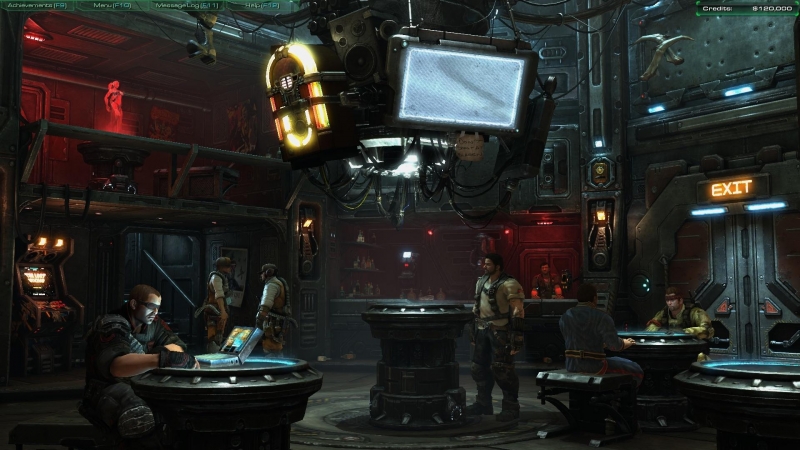
The story is told through a mixture of gorgeous CGI cut scenes, the much more common in-game cut scenes, a sort of ‘point and click adventure’-style interaction on Raynor’s flagship, and finally through good old fashioned video conferencing. The point and click sections act as the campaign’s hub and from there you can access various different parts of the ship – your armory (for upgrading units), the science lab (to unlock perks and, later on, advance the Protoss aspect of the storyline), a cantina (the highlight of which is a neat little shoot ‘em up arcade game called ‘Lost Viking’), and finally the bridge, where you access most of the missions. The game is structured so that you can, pretty much, complete missions in any order you choose, and the two different upgrade systems give you plenty of scope to focus on improvements that will benefit your own particular play style.
RTS campaigns tend to feel like a simple set of skirmishes with the odd bit of story thrown in-between each mission. StarCraft II doesn’t entirely shed itself of this impression, but the level of mission variety ensures that it doesn’t feel anywhere near as one dimensional as much of its competition. There are, of course, your standard skirmish-type missions, but there are also stealth missions, micro-intensive scenarios and frantic survival missions, all which help to keep things fresh.
Over the 12 year period since the original, the RTS genre has come a long way in respect of gameplay design, bringing with it improved functionality that has both made the original StarCraft feel somewhat archaic and made its enduring popularity all the more impressive. These features are all now present and accounted for, such as automatic mineral harvesting at the setting of a rally point, and a total revamp of the hotkey system so that they’re all neatly displayed at the bottom of screen; you now also have the ability to hotkey multiple buildings, queue spell casts and set up proper build queues. Smart casting has also been introduced, so you will only use one Psi Storm at a time when you have multiple High Templars selected, for example. Oh, and there’s now finally a message log in-game. None of this radically changes the StarCraft formula, but what it has done is brought the series bang up-to-date and made it so much more user friendly.
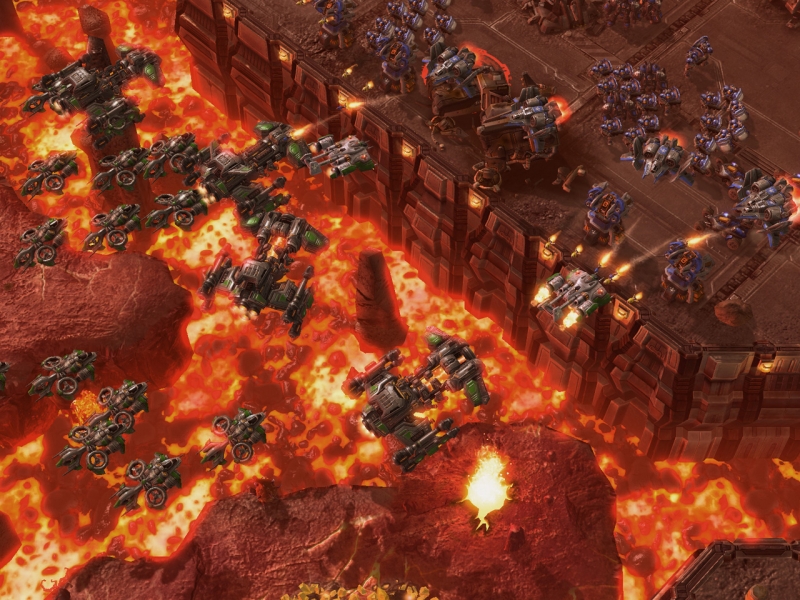
StarCraft II has already undergone months of tweaking and fine-tuning to ensure that it’s as balanced as possible, and there’s no doubt that this will continue into the distant future, just as it does with all of Blizzard’s games, with frequent patching to fix any new bugs or balance issues that come to light. During the Beta there were wide-ranging concerns about, for example, the Zerg’s lack of unit and tactical diversity, or the relative sidelining of the Templar branch of the Protoss tech tree. These are early days in the game’s lifetime, though, and the metagame will mutate hundreds of times over; every unit has its uses, and strategies rise and fall in popularity over time. Many key units for each of the three races have been discarded in the multiplayer for this sequel. Some have been removed entirely, like the Lurker or Reaver. Others have been removed, but their abilities remain on the battlefield in another, superior form. A good example of this is the Medivac Dropship, which combines the abilities of the old Medic and Dropship units. Others seem to have reverted into less useful forms – the Arbiter’s replacement, the Mothership, being a good case in point. And, of course, there are plenty of brand new units, like the Colossus, Viking and Roach.
On the presentational side of things Blizzard have done a tremendous job of overhauling the graphics, whilst at the same time retaining StarCraft’s distinctive look and feel. I must admit to being slightly nervous of the potential outcome in this regard when StarCraft II was first announced, but I needn’t have been - the game looks great. The original identities of each of the three races have of course been expanded upon – the Zerg’s creepy insectoid nature in particular really comes to the fore now with the new-look creep, which writhes and pulsates like a disgusting organism. Two of the Zerg’s new units in particular look fantastic – the Banelings and Infestors. The maps and their environments are detailed and vibrant, and yes, there’s a remake of Lost Temple. The excellent CGI is the highlight of the campaign and the in-game cut scenes aren’t too shoddy either. Loading times are on the lengthy side, however, and for some reason when the gameplay section of each single player mission commences there’s excruciating slowdown for about 5 seconds or so.
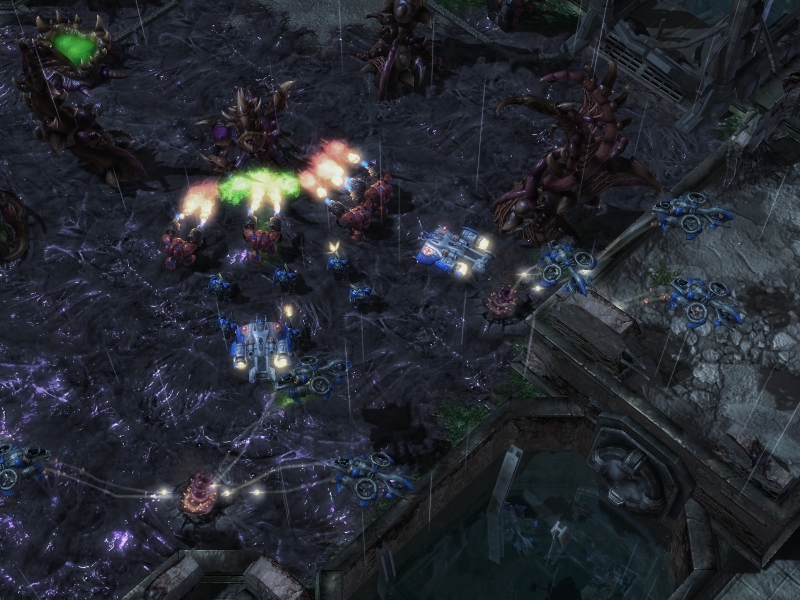
The musical score doesn’t fare quite as well. There are, of course, separate soundtracks for each race, as well as more general themes, but these tracks seem blander and have much less identity than those in the original. There are great moments where tracks feel like updated versions of the classic themes, but at other times I’m reminded more of Star Wars than StarCraft. Voice acting in the campaign can be quite cheesy at times, although the dialogue is probably the main culprit here. The unit vocals do not disappoint though – they are back and just as great as ever, with hundreds of lines (or noises, in the case of most Zerg) in total. My favourite so far is the SCV’s mix of horror and contempt when ordered to attack – “This is your plan!?”
The campaign took me 11 hours to complete, although there are plenty of ways to extend its life thanks to the game’s in-built achievement system, which will have you completing the campaign several times over if you want to unlock them all. Throughout all modes of the game you earn achievements - each one is worth a set amount of points and your overall points total is displayed on your profile page. Some achievements also have rewards attached to them, like additional avatars or clan-like decals. There are also several different difficulty levels to try, and of course the ‘Lost Viking’ arcade game to complete. As you would expect, you can also create skirmishes against the AI – AI which, on the harder difficulty settings, has been vastly improved since the original – either on your own, with AI allies, or with human allies online.
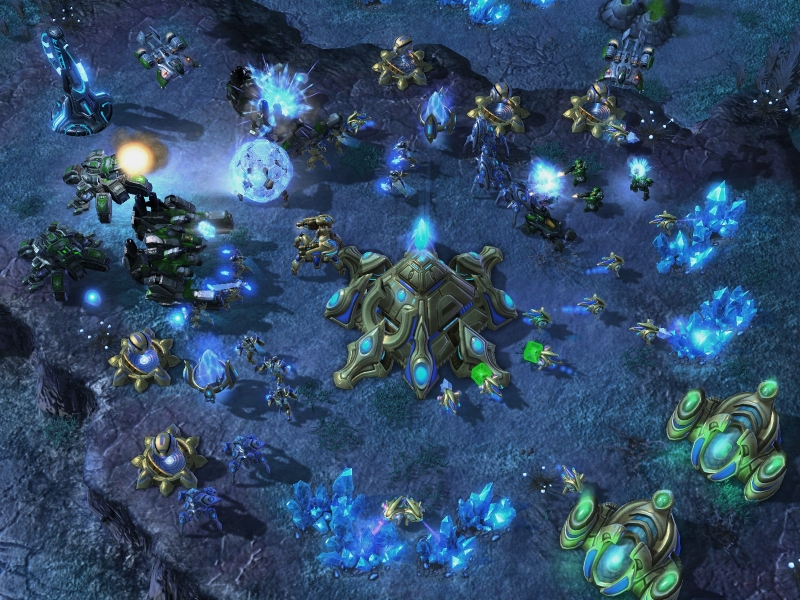
Next up is challenge mode, which reminds me of some of more the enjoyable user-made custom maps available for the original title. Each one basically tests your ‘micro’ abilities, and is a great taste of the potential future for custom map creation. I stress the word potential because the new structure for listing custom maps is much more restrictive than it was in the original game. Custom maps, instead of being hosted by the creator and then shared out to and played with individuals, who could in turn host the maps themselves, are now uploaded to a central database. The custom map section of Battle.net 2.0 lists the maps that have been uploaded in order of popularity, which does a good job of sifting out the worst maps. Unfortunately it’s also making it hard for new maps to break through because the overwhelming majority of people are joining the games at the top of the list, so it remains largely the same from day to day. Unnecessary restrictions, like the inability to host your own custom maps and the limit of 5 published maps per person is really throttling the potential of the custom map side of StarCraft II. An aspect of the game which should thrive and provide years of entertainment currently feels somewhat stillborn.
The problems with Battle.net 2.0 don’t stop there though – there’s no cross-region play, nor even the ability to switch realms as you could in the original, so forget about playing with your friends overseas. LAN has been removed. As have public chat channels, to be replaced by an inferior Xbox Live/PSN-esque friends system, so you can truly feel isolated within an online community of millions. Some compromise measures concerning chat channels have been promised for the future, although it remains to be seen whether they will actually materialise and, if they do, to what extent they will mitigate the problems caused by Battle.net 2.0.
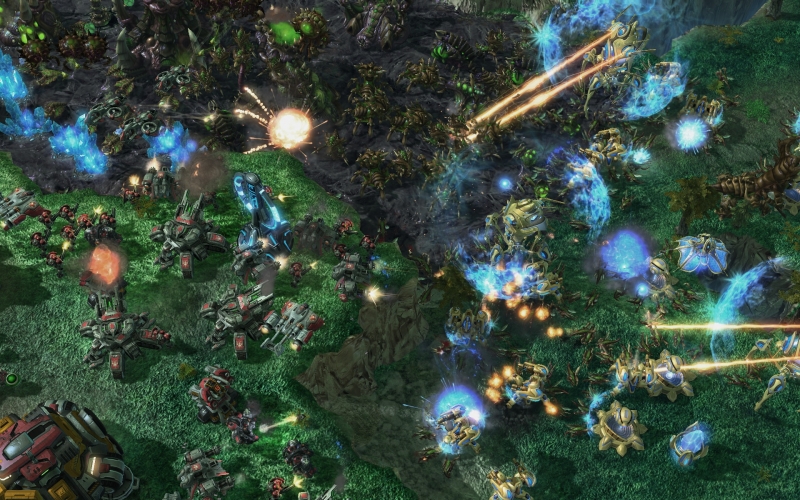
Overall, the new Battle.net feels like a step backwards, and is certainly the worst part of the overall package, but it’s not all bad. The ladder system has been completely overhauled and bears no resemblance to the shoddy original one. Every ranked game you play counts towards your statistics for the relevant ladder – be it 1v1, 2v2, 3v3, 4v4 or FFA. Once you’ve participated in 5 placement matches for each one you get ranked and placed in a league (Bronze, Silver, Gold etc.). You’ll be placed in a 100-man division within that league, with the aim being to rise through the ranks and earn promotion to a higher ranking league. This system is an undoubted improvement over the original one, not to mention addictive to take part in as well. It’s great to see your account’s overall stats, achievements and various ladder rankings all in one place too. Matchmaking is quick and effective; simply select your race and game type, then click ‘start’ and within a few seconds you’ll have a match on your hands.
There’s so much to talk about, but I’ve already overstayed my welcome, so I’ll round out by saying that StarCraft II is a great game that feels every bit like it should – like the original. Both gameplay and presentation have been updated and tweaked to make up for the series’ 12 year absence. It’s a shame that many of the problems with StarCraft II actually have little to do with the game itself and almost everything to do with Battle.net 2.0. Not only that, but they’re issues that have been raised from the first day of the Beta – so they’ve been looming large on the horizon for some time now. StarCraft has no doubt made a triumphant return, but it feels somewhat bittersweet.
VGChartz Verdict
8.9
Great








